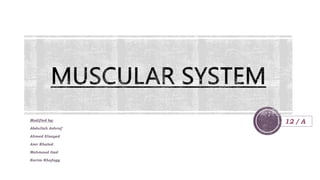This document discusses the structure and function of muscles in the human body. It covers the three main types of muscle - skeletal, cardiac, and smooth muscle - and their roles. Skeletal muscle is attached to bones and enables movement, cardiac muscle pumps blood through the heart, and smooth muscle regulates organs and blood vessels. Muscle contraction occurs through the sliding filament model where actin and myosin filaments interact powered by ATP. The nervous system controls muscle through motor neurons which trigger calcium release and the contraction or relaxation of muscle fibers.




























































